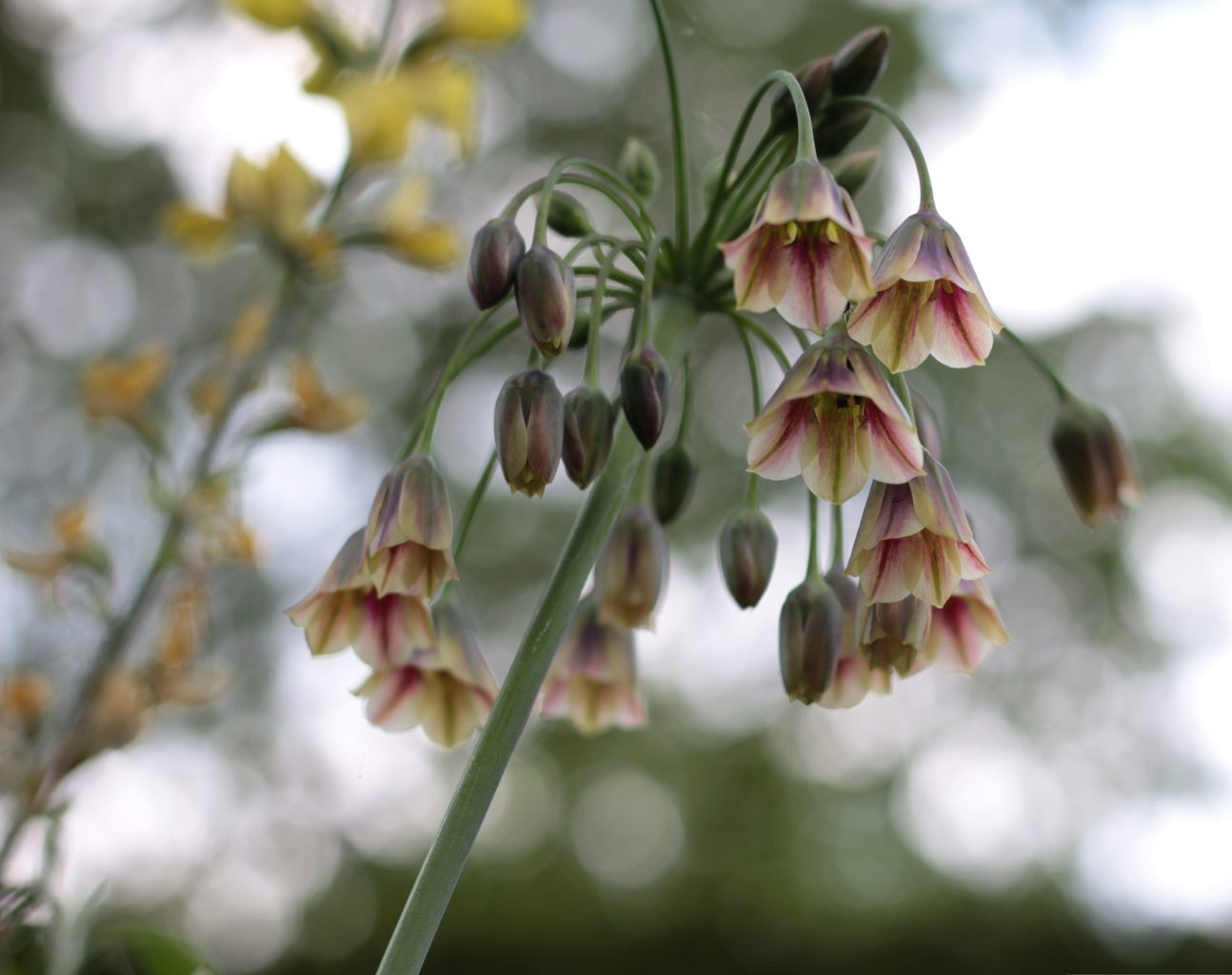
In contrast to flowering plants which are readily recognizable and abundant in the landscape of our lives, some are not as well-known to the general population. Allium Siculum (Sicilian honey garlic) was once classified to the lily family and then re-classified to the allium (onion) family. It was even further confused with a similar plant known as Allium bulgaricum, but now a more recent report of DNA analysis has shown them as essentially the same plant (perhaps originating from differing locations?).
One of its many names, Nectaroscordum siculum, comes from the Greek “nectar” (of or like nectar, the sweet liquid in flowers) and “scordum” meaning garlic (or false garlic). Siculum means “of or pertaining to Sicily, the island southwest of Italy”. Other names are: Sicilian honey lily, Sicilian honey garlic or Mediterranean bells.
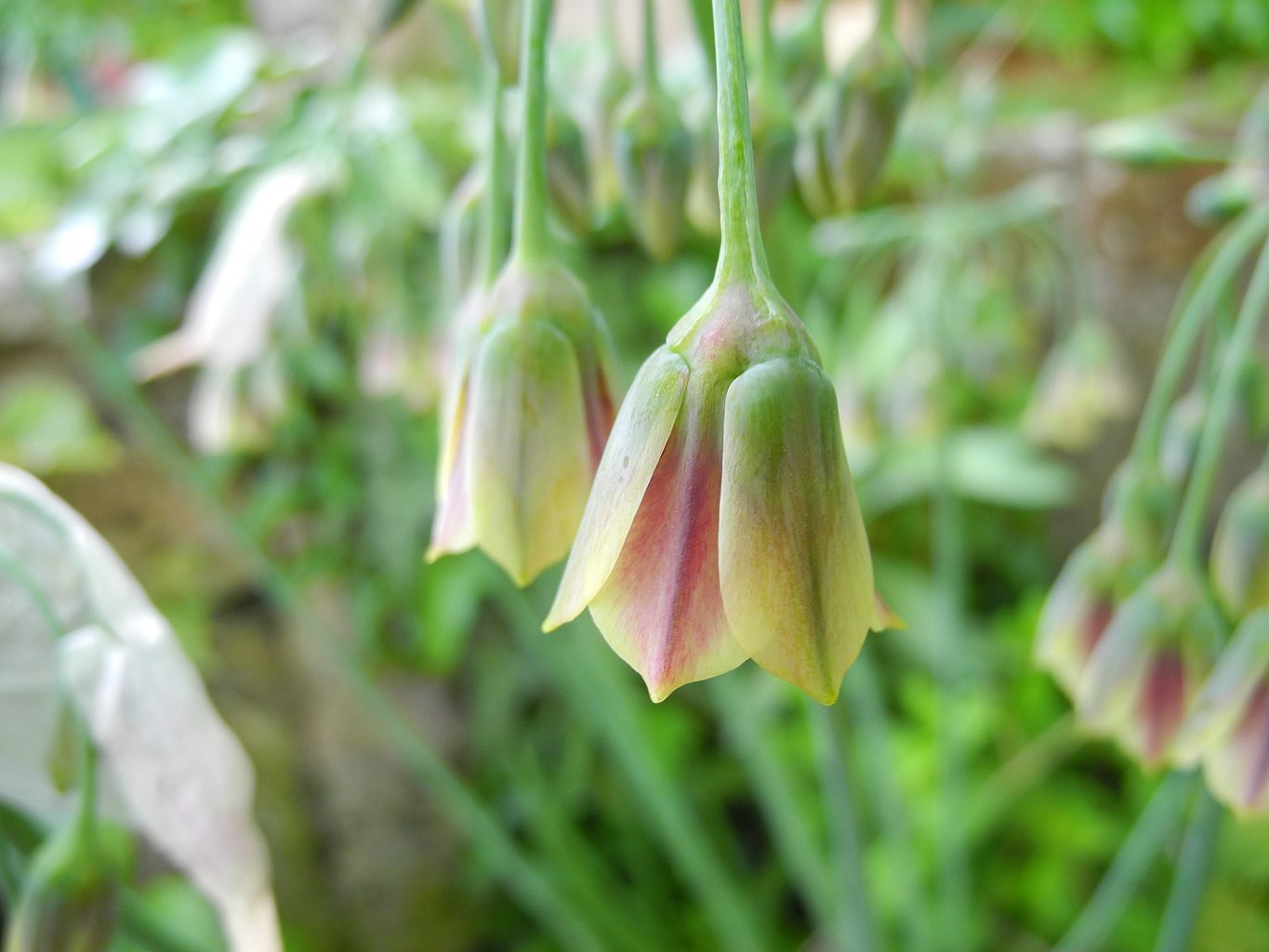
Nectaroscordum siculum subsp. Bulgaricum or Bulgarian Honey Garlic have slightly different colors within the flowers than those originating in Italy. There is currently an initiative in Bulgaria which invites people to expand and explore ways to “develop and promote practices that provide food and other resources while enhancing biodiversity.”
This initiative is offering the Bulgarian Honey Garlic as a plant they have been enjoying for years in dry form, prepared as “Samardala,” a tasty Bulgarian seasoning. The seasoning is prepared by harvesting the potent leaves of the plant, chopping and working them in sea salt. This mixture is then left to dry and once dry can be used in cooking or as a unique seasoning with onion-type overtones.
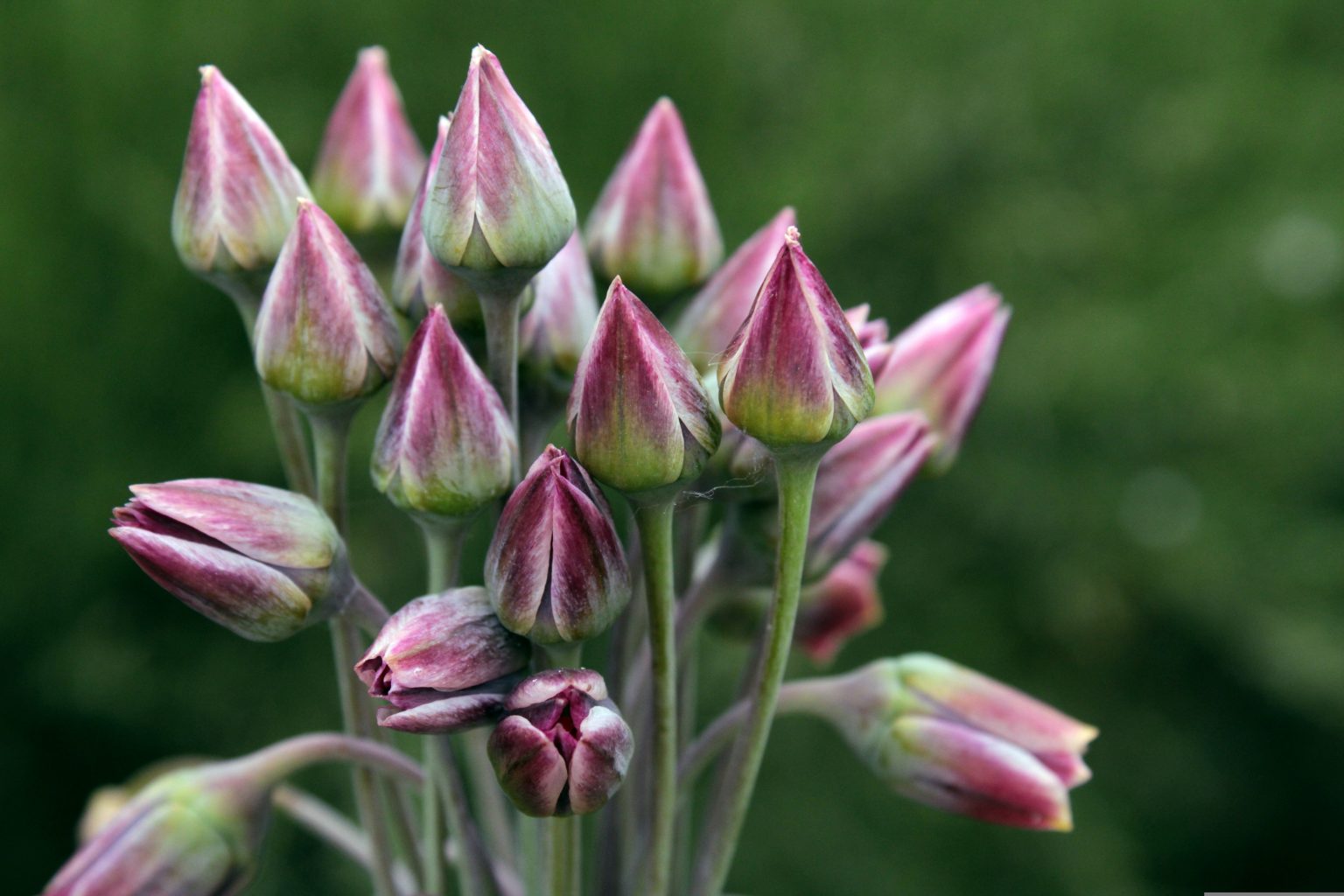
Delicate umbels emerge from a papery sheath (which then falls away) at the top of one stem. The stem is usually about 30 inches tall. An umbel consists of a number of short flower stalks (called pedicels) which spread from a common point, somewhat like umbrella ribs. The bell-shaped flowers arc downwards while they flower and then rise again after blooming to produce seed capsules.
Sicilian honey garlic is native to the Mediterranean, growing most commonly in damp and shady wooded areas. When they are planted in North American public gardens, it has been noted many people stop and look for long moments – their beauty is entrancing, but subtle. The foliage is unique too, with a triangular cross-section that twists as it grows, branching out from a central point.
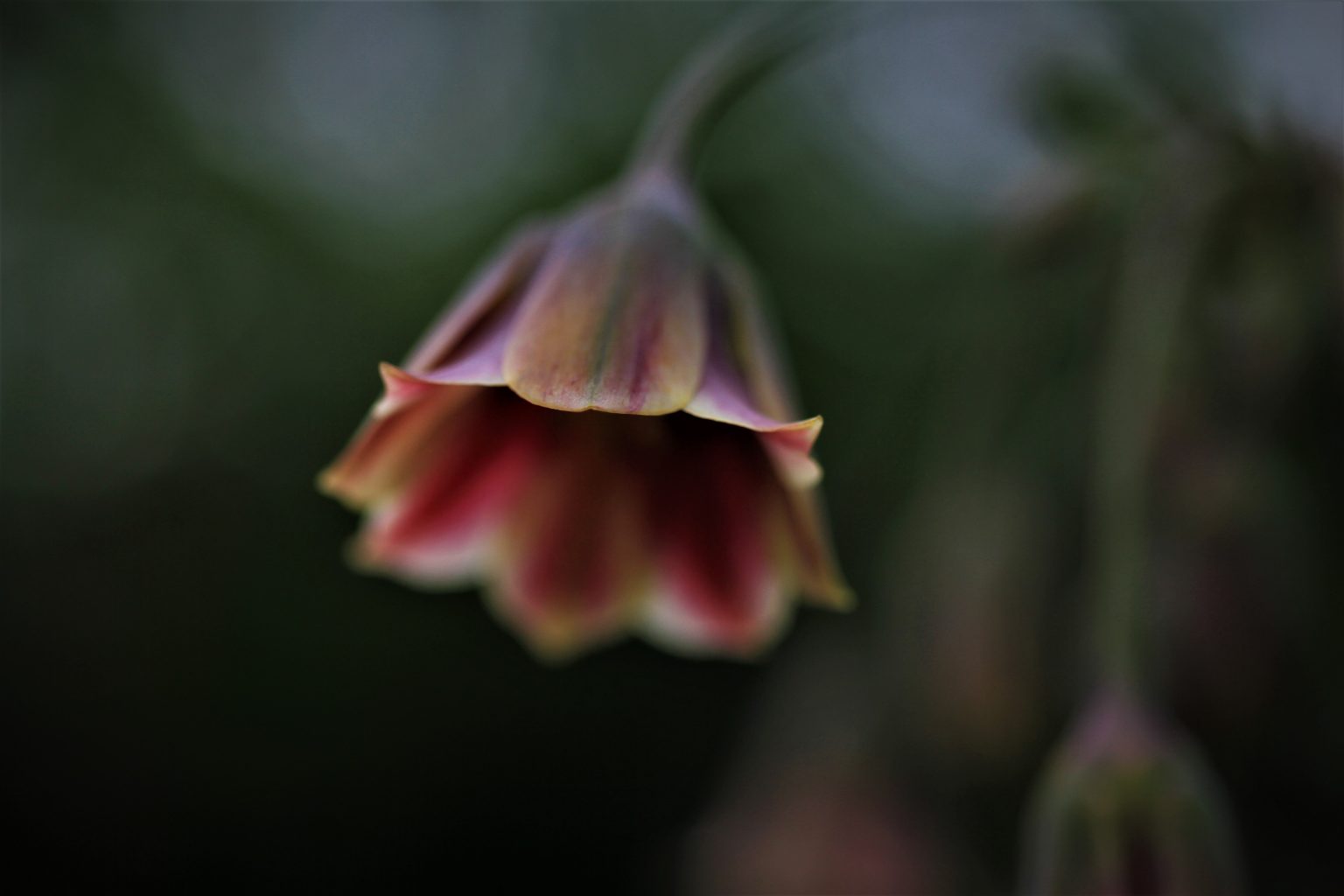
In Europe Sicilian Honey Garlic is commonly planted in the vegetable garden rather than being used as an ornamental.
Interestingly this little plant is virtually disease-free and pest-free. While attractive to bees and other pollinators (as well as hummingbirds), it repels deer, mice, chipmunks and related predators (probably because of its strong garlic smell).
Those who have grown Sicilian honey garlic are amazed by their staying power. One gardener writes of planting 10 bulbs 25 years before the time of writing his article and they all still survived, along with more plants that had self-sown. It is easy to make sure they do not self-sow by removing the faded flowers before seed pod formation.
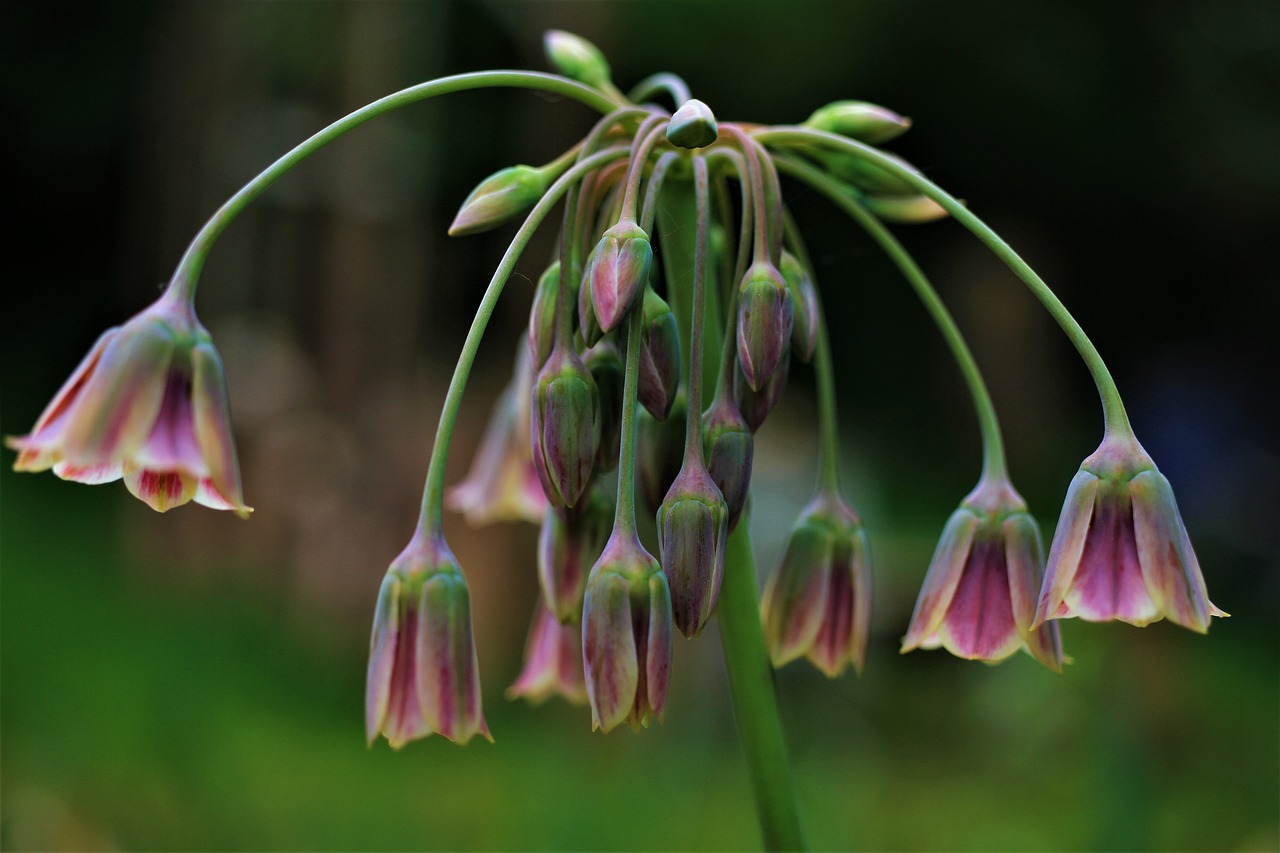
Nature offers humans many opportunities to gain perspective within our lives such as when one is standing at the base of a gigantic tree, consciously aware of the hundreds of years it has endured. While diving in deeply to the world of plants we often find those conscious moments as various characteristics stand out, some causing real amazement and admiration.
Sicilian honey garlic does not have center stage at festivals, is not the subject of famous paintings or even regularly featured on handmade quilts. And yet it is a long-term entity with quietly attractive qualities which may be quite valuable to take with you into meditation.
Not only can this plant protect itself by emitting a strong smell, it also nurtures other life such as bees, hummingbirds and humans. We hope you take some time with the Sicilian honey garlic plant to learn from it while appreciating its beauty and ability.
